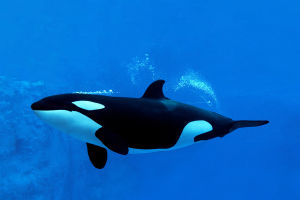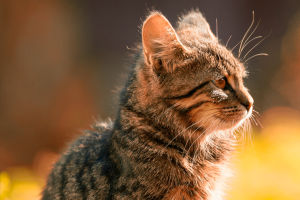Beautiful Yet Fierce
Jellyfish have no brains. Its body has only two layers, like a plastic bag (cortical layer) and another plastic bag (stomach layer), which are glued together with a gel-like glue (middle layer).
The main component of jellyfish is water, which is composed of endoderm and endoderm. There is a thick dielectric gel layer between the two layers, which is not only transparent, but also has a floating effect. When they move, they use the reflection of the water mist in their bodies to move forward.
From a distance, they look like a top-shaped umbrella, drifting rapidly in the water; some jellyfish umbrellas also have patterns of various colors. The moving jellyfish of different colors are very beautiful.
It is such a beautiful jellyfish, but very ferocious.
Tentacles are one of the most important structures in cnidaria, although some polyps and jellyfish types lack tentacles at all.
Those slender tentacles are its digestive organs and its weapons. The tentacles are covered with stinging cells that, like poisonous threads, can shoot venom. After the prey is stabbed, it will quickly paralyze and die.
Once jellyfish encounter prey, they will never let go easily. After being stung, humans experience rash, redness, itching, pain, drop in blood pressure, and even difficulty breathing, fainting, shock and death.
When it is difficult to breathe after being stabbed by a jellyfish, artificial respiration or cardiac injection should be performed immediately. Don't be careless to avoid accidents.
The way of life of jellyfish.
Prey.
Immediately after the jellyfish finds its prey, its tentacles cling to the prey and shoot out venom. After the prey is stabbed, it will quickly paralyze and die.
Jellyfish are all carnivorous, feeding on plankton, small crustaceans, polychaetes and even small fish.
Symbiosis.
Jellyfish have their little friends, the double-fin pomfret. It can swim freely between the tentacles of the jellyfish without being attacked.
The jellyfish "protected" the pomfret, which devoured the small creatures that inhabited the jellyfish.
Sports.
The jellyfish changes the volume of the inner cavity by shrinking the shell and squeezing the inner cavity, ejecting the water in the cavity, and moving with the help of water jets. Jellyfish use their tentacles to effectively change the direction of movement.
Why are there more and more jellyfish in recent years?
With global warming in recent years, jellyfish have been submerged. An increase in ocean temperature of 1°C to 2°C will not harm jellyfish at all, but it will have a serious impact on the living environment of jellyfish's natural enemies, sea turtles.
For a long time, human overfishing of marine fish has seriously damaged the ecological balance of the ocean, and has also led to the flooding of aquatic mollusks such as jellyfish and harmful algae.


